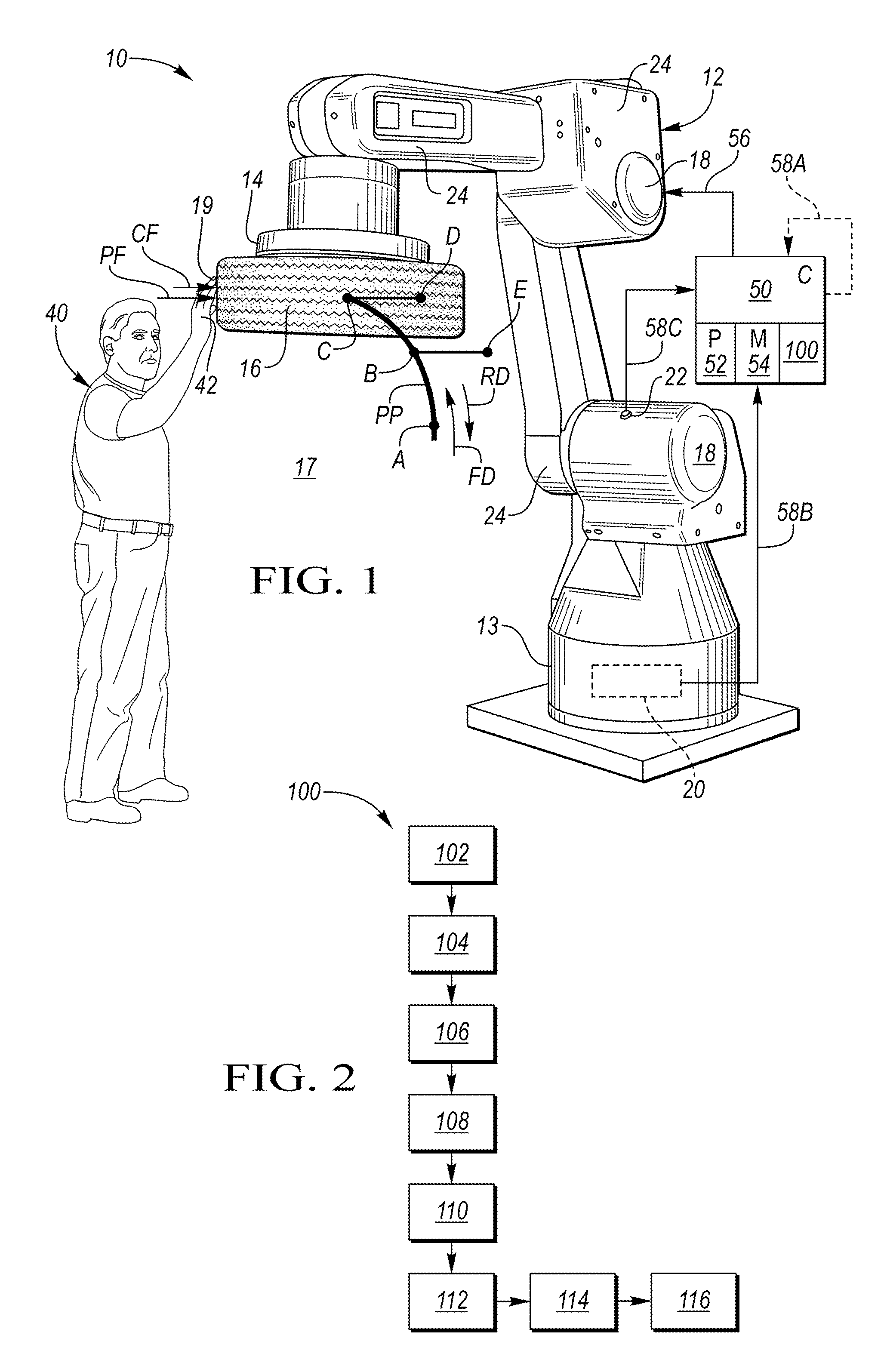Collaborative robot system and method
a robot and collaborative technology, applied in the field of robot and human collaboration, can solve the problems of limited force and speed capabilities, stop moving of existing collaborative robots, and limited reach capabilities, so as to improve the repeatability, payload, and reach capabilities of collaborative robots, and improve the repeatability of collaborative robots. , the effect of improving the repeatability of collaborative robots
- Summary
- Abstract
- Description
- Claims
- Application Information
AI Technical Summary
Benefits of technology
Problems solved by technology
Method used
Image
Examples
Embodiment Construction
[0011]Referring to the drawings, wherein like reference numbers refer to like components, a system 10 for robot and human collaboration is shown in FIG. 1. The system 10 includes a robot 12. The robot 12 may be an electric robot, as shown, or may be any other type of robot. The robot 12 may have six degrees of freedom of motion, as shown, or have any other suitable number of degrees of freedom of motion, as understood by those skilled in the art. The robot 12 may have a base 13. The base 13 may be mounted to a floor, as shown, or may be mounted to a fixed structure (not shown), a piece of moving equipment (not shown), or any other suitable mounting surface or structure. An end effector 14 may be attached to the robot 12 to allow the robot 12 to grasp, move, and release a gripped part 16 or to perform a task, including but not limited to loading parts, unloading parts, assembling, adjusting, welding, and inspecting. While the end effector 14 is shown in FIG. 1 as a wheel gripper, the...
PUM
 Login to View More
Login to View More Abstract
Description
Claims
Application Information
 Login to View More
Login to View More - R&D
- Intellectual Property
- Life Sciences
- Materials
- Tech Scout
- Unparalleled Data Quality
- Higher Quality Content
- 60% Fewer Hallucinations
Browse by: Latest US Patents, China's latest patents, Technical Efficacy Thesaurus, Application Domain, Technology Topic, Popular Technical Reports.
© 2025 PatSnap. All rights reserved.Legal|Privacy policy|Modern Slavery Act Transparency Statement|Sitemap|About US| Contact US: help@patsnap.com


